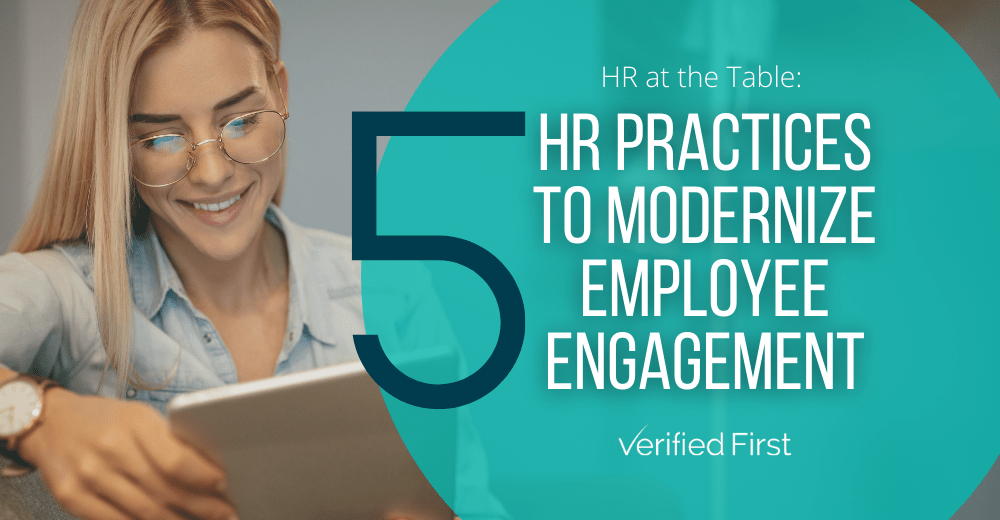
From a very “reliable” study we found, “more information gets passed through water cooler gossip than through official memos. Which puts [some subjects] at a disadvantage because [they] bring [their] own water to work.” While Dwight Schrute isn’t necessarily an industry expert, he’s made a valid point. As COVID has increased remote work, many employees are bringing their own water to work. Companies are asking themselves, “how can we create a virtual ‘water cooler experience’ to keep remote employees engaged? During episode three of our HR at the Table series, TrueBlue’s HR Director, Virgilio Cintron, identified five HR practices to modernize employee engagement.
Finding talent is hard, especially when recruiting for a very niche set of qualifications and experience. But, we’ve come to find out that experience does not equal skill. Narrow job descriptions can be limiting. Instead, Virgilio Cintron recommended recruiting and hiring individuals with skills & competencies that (1) match company culture and (2) can evolve as the role and company evolve.
Ask yourself, "Does this candidate have the skill to engage with our company culture, now and in the future?"
Reasons to hire for skills:
The way employees view, interact, and engage with your company plays a significant role in their performance. To create a positive perception of the role and company, Virgilio Cintron, TrueBlue's Director of HR, suggests considering how you will engage with employees at each moment of the employee's life cycle.
HR touches the employee life cycle through job enrichment, recruiting, selection, training and development, strategic compensation, and performance management. Within those areas, there are countless opportunities to engage with employees.
One helpful resource is to create an Employee Experience Journey map to determine:
Strategically engaging employees at each moment in their life cycle is vital because strong employee engagement increases loyalty, productivity, and retention.
Engage employees the way they want to be engaged with. The reality is, no HR technology is good enough to replace human interactions.
Technology frees your schedule, enabling you to sit down with your employees, customize their experience, engage them, and establish long-term relationships.
While employees care about pay, benefits, and job security, their productivity levels are highly influenced by managers, job assignments, trust, recognition, and day-to-day communications. HR paves the way for employee engagement initiatives through their designs, measurements, and evaluations — they are the mastermind, while executive leadership is the backbone.
According to SHRM, meaningful engagement results in behaviors like:
Measuring employee happiness gives insight to executive leaders about how their employees feel in the workplace. Why does this matter? Companies with happy employees (1) outperform the competition by 20%, (2) are 12% more productive, (3) produce 37% greater sales, and (4) take 10x fewer sick days.
Although happiness isn’t something you can easily measure, some metrics can give insight into how employees feel at each touchpoint of their life cycle. These metrics can be used to show how HR investments have led to positive and measurable outcomes for the organization.
When acquiring and retaining talent, measure and analyze insights like:
In a previous HR at the Table episode with MSI’s VP of HR, Chris Courneen, we discussed how executive buy-in is crucial to the employee experience. Successful ideas and initiatives don't get adopted without support — at least, not often. Thus, it's essential to understand your leadership's priorities and align your efforts to the company's mission and strategy.
“Sometimes we have really good ideas and initiatives we want to do, but if the business isn’t ready, it’s not going to get the adoption/ support we need.” -Virgilio Cintron
Consider asking yourself:
For more insight on getting executive buy-in, check out our Q&A: Exclusive Interview With MSI's VP of HR, Chris Courneen.
Now more than ever, companies need to determine how they will engage with their workforce and how they can influence them to engage with others — i.e., the water cooler experience.
Modernizing employee engagement matters because talent can go anywhere they want with the abundance of remote work opportunities.
The companies who failed to mature their employee experience during this time will see a shift in talent leaving as offices open back up. Companies who redefined their employee experience during this time will experience greater talent in their hiring funnel. To get there:
One of the key intersections of HR tech and work is the employee experience. To continue the discussion, join us in our next HR at the Table episode, where we’ll discuss Talent, Tech & Brand: The HR Trifecta for Return.